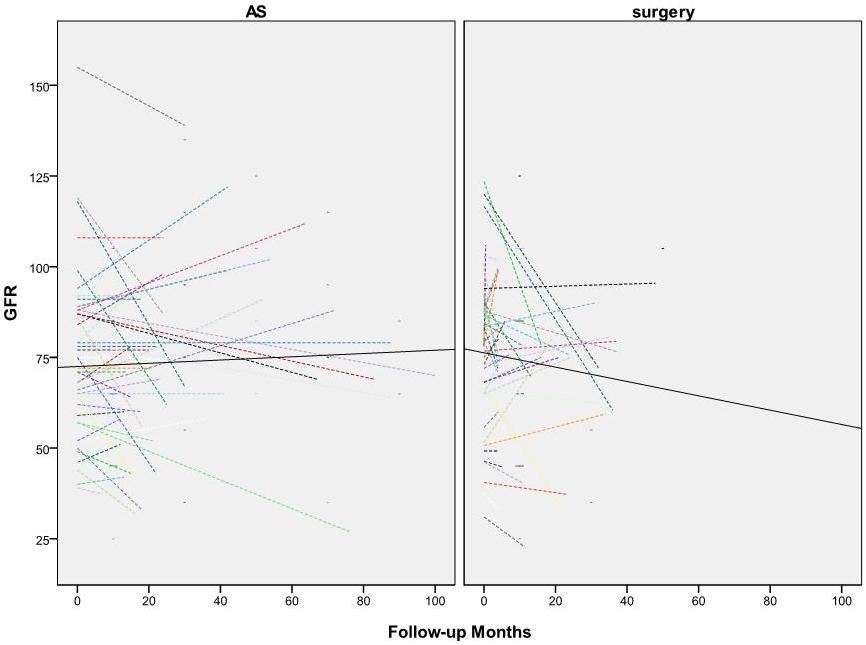|
Back to Annual Meeting Program
Change in Renal Function in Patients with Small Renal Masses Treated with Nephron Sparing Surgery vs. Active Surveillance- A Matched Pair Analysis
Kristen R. Scarpato, MD1, Kyle T. Finnegan, BS2, Ryan P. Dorin, MD2, Halil Kiziloz, MD2, Steven J. Shichman, MD2, Anoop M. Meraney, MD2.
1University of Connecticut Health Center, Farmington, CT, USA, 2Hartford Hospital, Hartford, CT, USA.
BACKGROUND: With widespread use of cross sectional imaging, incidental small renal masses (SRM) are discovered more frequently. There is increasing data that SRMs managed with active surveillance (AS) demonstrate equivalent disease specific outcomes compared with surgical therapy. A potential benefit of AS over operative intervention, even with nephron sparing surgery (NSS), is optimal preservation of renal function. We compared renal functional outcomes in two matched groups treated with NSS or AS for SRMs.
METHODS: Using data from an institutional IRB approved, prospectively managed database patients with an SRM who underwent partial nephrectomy (Group 1) were compared to those with an SRM managed with AS (Group 2). Estimated glomerular filtration rate (eGFR) in mL/min/1.73m2 was calculated using the Modification of Diet in Renal Disease formula. The groups were matched for pre-treatment eGFR, tumor size and body mass index (BMI). Patients with < 6months of eGFR data following surgery (Group 1) or diagnosis (Group 2) were excluded. The eGFR values were trended utilizing a mixed model regression analysis and compared.
RESULTS: A total of 94 patients met inclusion criteria (47 in each group). Mean pre-treatment eGFR, BMI and tumor size for groups 1 and 2 were 76.5±23 and 76.1±22, 28±4.2 and 27.9±4.3 kg/m2; and 2.3±1 and 2.1±1.1 cm, respectively (p<0.01 for all categories). Mean follow-up period for groups 1 and 2 were 13.5±13 and 11.6 months, respectively. The estimated change rate of eGFR in the regression model for whole study group was 0.5/ year). The estimated eGFR rates of change in the regression model for groups 1 and 2 were minus 3.5 and plus 2.4 per year, respectively (p=0.78).
CONCLUSIONS: In a matched pair cohort analysis, there was a statistically non-significant trend towards greater preservation of renal function in patients managed with AS over NSS for SRMs. Both AS and NSS resulted in effective renal function preservation. Longer follow up is needed to assess for potential differences in eGFR preservation.

Back to Annual Meeting Program
|